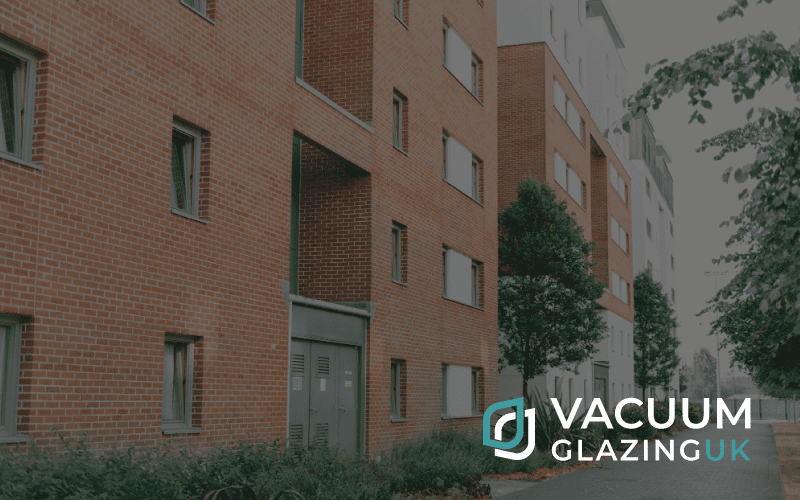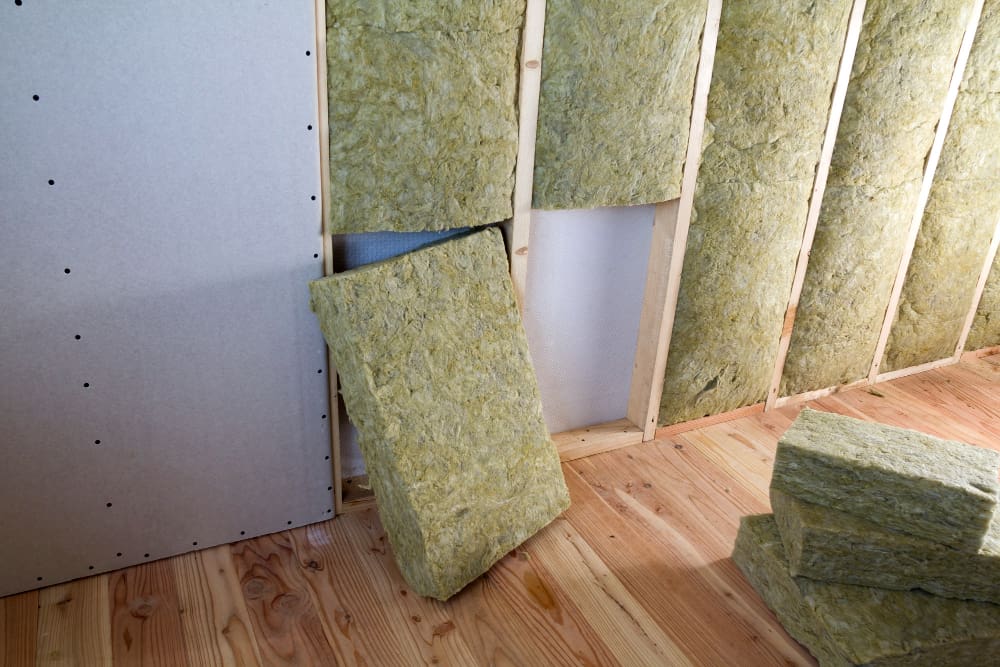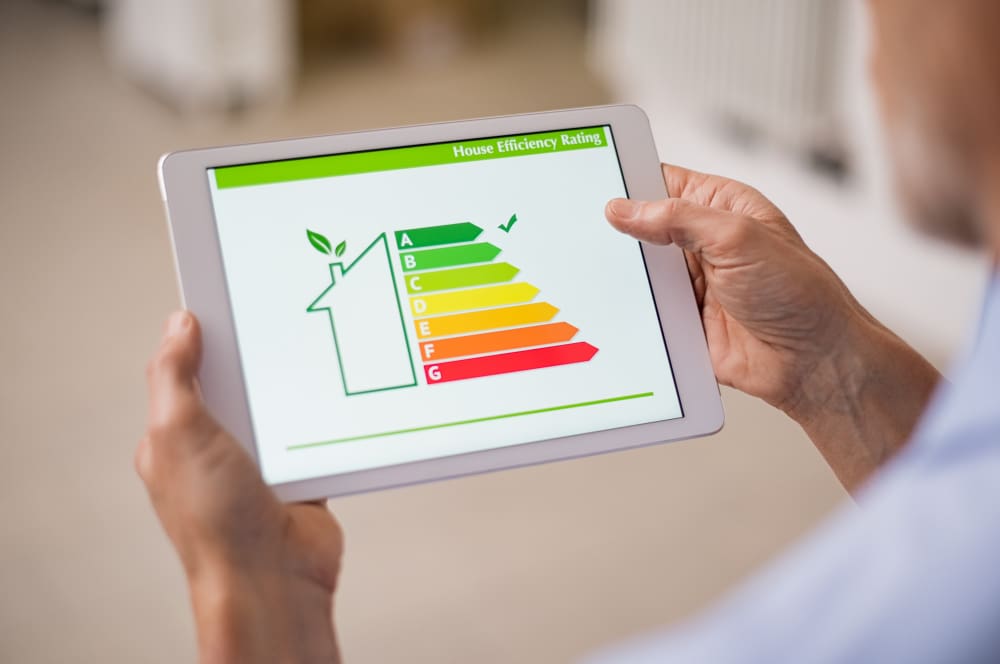
Effective Strategies for Retrofitting Energy-Efficient Insulation in Local Authority Housing
Explore the benefits and process of retrofitting energy-efficient insulation in UK local authority housing. Gain insights, strategies, and best practices to enhance sustainability and reduce energy consumption.
I. Introduction
As the world embraces the urgent need for sustainable and energy-efficient solutions, local authorities in the UK are taking proactive measures to retrofit their housing stock with energy-saving features. In this article, we will delve into the effective strategies for retrofitting energy-efficient insulation in UK local authority housing.
With a focus on architects and local authority professionals, this comprehensive guide will provide valuable insights into the benefits and process of retrofitting energy-efficient insulation. From understanding the significance of retrofits to exploring insulation materials, funding opportunities, best practices, overcoming challenges, and effective project management, we will equip you with the knowledge and tools needed to make a meaningful impact in your housing projects.
As we navigate the ever-evolving landscape of sustainable building practices, it is crucial to prioritize energy-efficient retrofits in local authority housing. By embracing these strategies, we not only reduce energy consumption and carbon footprint but also enhance the comfort and well-being of residents. Furthermore, energy-efficient retrofits align with UK building regulations and contribute to achieving energy efficiency targets.
Join us on this journey as we uncover the key elements of successful retrofit projects and empower architects and local authority professionals to drive sustainable and energy-efficient housing initiatives to create a brighter and more sustainable future for UK local authority housing.
II. Understanding Energy-Efficient Retrofits
A. Definition of Energy-Efficient Retrofits and Their Significance in Enhancing Building Performance
Energy-efficient retrofits refer to the process of upgrading existing buildings to improve their energy performance and reduce environmental impact. In the context of UK local authority housing, these retrofits focus on enhancing energy efficiency through insulation upgrades and other measures. By implementing energy-efficient retrofits, local authorities can make substantial progress towards meeting sustainability targets and reducing greenhouse gas emissions.
B. Benefits of Retrofitting Insulation in Terms of Energy Savings, Reduced Carbon Footprint, and Enhanced Comfort
Retrofitting insulation in UK local authority housing brings several key benefits that positively impact both the environment and residents’ well-being. These include:
1. Energy Savings
Upgrading insulation helps to minimise heat loss and improve thermal efficiency, resulting in reduced energy consumption and lower energy bills for residents. Energy savings contribute to long-term cost savings for local authorities as well.
2. Reduced Carbon Footprint
Retrofitting insulation significantly reduces the carbon footprint of local authority housing. By minimising heat loss and improving energy efficiency, less energy is required for heating and cooling, leading to decreased reliance on fossil fuels and a lower overall carbon footprint.
3. Improved Comfort
Effective insulation upgrades enhance indoor comfort by creating more consistent temperatures throughout the year. By reducing drafts and heat loss, insulation helps maintain warmer interiors in winter and cooler interiors in summer, ensuring a comfortable living environment for residents.
4. Health and Well-being
Enhanced insulation can contribute to better indoor air quality by minimising moisture build-up and the risk of mould growth. Improved thermal comfort also has a positive impact on residents’ well-being and quality of life.
By understanding the significance of energy-efficient retrofits and the benefits of retrofitting insulation in local authority housing, architects and UK local authority professionals can make informed decisions and prioritize sustainable retrofitting strategies for their housing stock.
III. Exploring Insulation Materials
A. Overview of Different Types of Insulation Materials Suitable for UK Retrofitting Projects
When it comes to retrofitting insulation in UK local authority housing, various insulation materials offer effective solutions. Here are some commonly used options:
1. Mineral Wool
Mineral wool, such as glass wool or rock wool, is a popular choice due to its excellent thermal and acoustic insulation properties. It is available in different forms, including batts, rolls, and loose-fill.

2. Expanded Polystyrene (EPS)
EPS insulation boards provide good thermal performance and moisture resistance. They are lightweight, easy to install, and suitable for various applications, including walls, roofs, and floors.
3. Extruded Polystyrene (XPS)
XPS insulation offers high compressive strength, making it ideal for applications where load-bearing capacity is required. It provides excellent thermal resistance and moisture resistance.
4. Polyisocyanurate (PIR) and Polyurethane (PUR) Foam
PIR and PUR foams provide high thermal insulation and can be applied as rigid boards or sprayed foam. They offer good energy efficiency and are commonly used in cavity wall insulation and roof insulation.
B. Considerations for Choosing the Right Insulation Material
When selecting the appropriate insulation material for retrofitting projects in UK local authority housing, several factors should be considered:
1. Building Type
Different insulation materials may be more suitable for specific building types, such as solid walls, cavity walls, or timber-framed constructions. Understanding the unique requirements of each building type will help determine the most effective insulation material.
2. Climate Conditions
The climate in different regions of the UK varies, and insulation requirements may differ accordingly. Consider the local climate conditions, including temperature ranges, humidity levels, and exposure to wind and rain, when choosing insulation materials.
3. UK-Specific Regulations
Ensure compliance with UK building regulations and standards, such as the Building Regulations Part L, which sets energy efficiency requirements for new and existing buildings. Certain insulation materials may have specific requirements or limitations outlined in these regulations.
4. Performance and Longevity
Evaluate the thermal conductivity (U-value) and fire resistance properties of insulation materials to ensure they meet the desired performance standards. Consider the durability and expected lifespan of the materials to make informed decisions for long-term effectiveness.
By exploring different insulation materials suitable for UK retrofitting projects and considering factors such as building type, climate conditions, and UK-specific regulations, architects and local authority professionals can make informed choices to optimize energy efficiency and achieve sustainable retrofitting outcomes.
IV. Funding Opportunities and Incentives
A. Discussion of Available Funding Programs and Incentives Specific to UK Local Authorities
When embarking on energy-efficient retrofits in UK local authority housing, accessing funding programs and incentives can significantly support the implementation process. Here are some key considerations:
1. Local Authority Funding
Many local authorities offer their own funding schemes to support energy-efficient retrofit projects. These programs may include grants, loans, or partnerships with external organisations. Research and explore the funding opportunities available specifically for local authority housing projects, for example the Home Energy Performance Retrofit:
https://www.gov.uk/government/collections/home-energy-performance-retrofit-funding-for-local-authorities-and-housing-associations-to-help-improve-the-energy-performance-of-homes.
2. Government Initiatives
The UK government has launched several initiatives and schemes aimed at promoting energy efficiency in the housing sector. These programs often provide financial assistance, advice, and resources to local authorities. Examples include the Green Homes Grant scheme, the Energy Company Obligation (ECO), and the Social Housing Decarbonisation Fund (https://www.gov.uk/government/publications/social-housing-decarbonisation-fund-wave-2 ).
B. Overview of Government Schemes, Grants, and Financing Options
The UK government offers various schemes, grants, and financing options to encourage energy-efficient retrofits in housing. Familiarise yourself with these opportunities to make the most of available funding:
1. Green Homes Grant
This scheme provides vouchers to homeowners and landlords to fund energy-efficient improvements, including insulation, heating systems, and windows. Check if local authority housing projects are eligible for such grants.
2. Energy Company Obligation (ECO)
ECO is an energy efficiency scheme that obligates large energy suppliers to provide funding for eligible low-income and vulnerable households. Local authorities may collaborate with energy suppliers to access ECO funding for retrofit projects.
(https://www.ofgem.gov.uk/environmental-and-social-schemes/energy-company-obligation-eco )
3. Salix Finance
Salix Finance offers interest-free loans for public sector organisations, including local authorities, to implement energy efficiency projects. Explore the opportunities to secure financing through Salix Finance for retrofitting initiatives.
C. Tips for Navigating the Application Process and Maximizing Funding Opportunities
To maximise funding opportunities for energy-efficient retrofits in local authority housing, consider the following tips:
1. Research Eligibility Criteria
Thoroughly review the eligibility criteria and requirements for each funding program or grant. Ensure your retrofit project aligns with the specific objectives and guidelines outlined by the funding body.
2. Seek Expert Advice
Consult with energy efficiency experts, sustainability consultants, or funding advisors who specialize in local authority housing projects. They can provide valuable insights on available funding options and help navigate the application process.
3. Collaborate with Partners
Explore partnerships with other organisations, such as housing associations, community groups, or private sector entities, to leverage additional funding sources and resources. Collaborative efforts can enhance the chances of securing funding for larger-scale retrofit projects.
4. Plan for Long-Term Sustainability
When developing retrofit plans and budgets, consider the long-term sustainability of the improvements. Prioritise energy-efficient measures that offer ongoing energy savings and contribute to the overall sustainability goals of local authority housing.
By understanding the funding programs and incentives available to UK local authorities, architects and professionals can strategically navigate the application process, secure necessary financing, and maximise funding opportunities for energy-efficient retrofit projects.
V. Best Practices for Retrofitting Energy-Efficient Insulation
A. Step-by-Step Guide to the Retrofitting Process Tailored for UK Local Authority Housing
To ensure successful energy-efficient retrofits in UK local authority housing, it’s crucial to follow a systematic approach. Here is a step-by-step guide tailored for the UK context:
1. Conduct Energy Audits
Begin by conducting energy audits of the existing housing stock to identify areas with the greatest energy loss. This evaluation will help prioritise retrofitting efforts and determine the appropriate insulation solutions.
2. Develop Retrofit Plans
Based on the energy audit findings, develop comprehensive retrofit plans that outline the specific insulation measures to be implemented. Consider factors such as building type, age, occupancy patterns, and budget constraints.
3. Engage Qualified Contractors
Select experienced and accredited contractors with expertise in energy-efficient retrofitting. Request references, review past projects, and ensure they have a solid understanding of UK building regulations and energy efficiency standards.
4. Choose High-Quality Insulation Materials
Select insulation materials that are suitable for the UK climate and comply with industry standards. Consider factors such as thermal performance, durability, moisture resistance, and fire safety.
B. Considerations for Engaging with Contractors and Ensuring Quality Workmanship in the UK Context
When working with contractors for energy-efficient retrofits, keep the following considerations in mind:
1. Obtain Multiple Quotes
Seek quotes from multiple contractors to compare pricing, services offered, and project timelines. Request a breakdown of costs to understand how the budget is allocated across different aspects of the retrofitting project.
2. Verify Accreditations and Certifications
Ensure that the selected contractors hold relevant accreditations, such as TrustMark or PAS 2030 certification. These certifications validate their competency and adherence to industry standards.
3. Define Performance Standards
Clearly communicate your expectations regarding the performance of the insulation materials and desired energy efficiency outcomes. This will help contractors understand the project goals and deliver quality workmanship.
4. Monitor the Installation Process
Regularly inspect the installation process to ensure that insulation materials are correctly installed and in accordance with the manufacturer’s guidelines. Address any issues or concerns promptly to maintain the quality of the retrofit project.
C. Compliance with UK Building Regulations and Energy Efficiency Standards
When retrofitting energy-efficient insulation in UK local authority housing, compliance with building regulations and energy efficiency standards is paramount. Consider the following aspects:
1. Building Regulations
Familiarise yourself with the latest UK building regulations, such as Part L (Conservation of Fuel and Power), which outline requirements for energy efficiency in new and existing buildings. Ensure that the retrofitting work aligns with these regulations.
2. EPC Requirements
Energy Performance Certificates (EPCs) assess the energy efficiency of a building. Understand the EPC requirements for local authority housing and strive to improve the EPC ratings through effective insulation retrofits.
3. PAS 2030 Compliance
If seeking access to certain funding schemes, ensure that contractors comply with the PAS 2030 standard. This industry-standard specifies requirements for energy-efficient retrofit measures and provides assurance of quality workmanship.
By following best practices, including a step-by-step retrofitting guide, engaging with qualified contractors, and ensuring compliance with building regulations and energy efficiency standards, UK local authorities can successfully implement energy-efficient insulation retrofits in their housing stock. These practices contribute to reducing carbon emissions, improving comfort for residents, and achieving long-term energy savings.
VI. Overcoming Common Challenges
A. Addressing Common Challenges Faced by UK Local Authorities During Energy-Efficient Retrofitting Projects
Energy-efficient retrofitting projects in UK local authority housing can present several challenges. It’s important to anticipate and address these challenges effectively. Here are some common challenges and strategies to overcome them:
1. Budget Limitations
Limited budgets can be a major obstacle for retrofitting projects. Explore available funding options, grants, and incentives specific to energy efficiency initiatives in the UK. Prioritise projects based on potential energy savings and consider phased implementation to maximize budget utilisation.
2. Tenant Engagement
Engaging tenants in the retrofitting process is crucial for project success. Implement communication strategies to educate tenants about the benefits of energy efficiency and how it will enhance their living conditions. Offer incentives, organise information sessions, and encourage participation to gain tenant support and cooperation.
B. Strategies to Overcome Budget Limitations, Tenant Engagement, and Technical Obstacles Specific to the UK Context
1. Budget Limitations
Seek partnerships with external organisations, such as energy efficiency-focused nonprofits or corporate sponsors, to supplement funding. Explore collaborative funding opportunities with other local authorities or join regional energy efficiency initiatives to access larger funding pools.
2. Tenant Engagement
Develop targeted communication campaigns tailored to the local authority housing community. Use various channels such as newsletters, social media, and community events to raise awareness and provide clear information on the benefits of retrofitting. Offer personalised assistance and address tenant concerns to foster engagement and participation.
3. Technical Obstacles
Collaborate with experienced retrofitting professionals who are well-versed in the technical requirements and challenges of UK local authority housing. Ensure that contractors have the necessary expertise to handle specific building types and comply with UK regulations. Conduct thorough project planning, including feasibility assessments and technical reviews, to mitigate potential obstacles.

C. Tips for Effective Project Management and Stakeholder Collaboration in UK Local Authority Housing
1. Establish Clear Project Goals
Clearly define project goals, including energy savings targets, carbon reduction objectives, and desired comfort improvements. Share these goals with all stakeholders to align their efforts and create a unified vision.
2. Effective Project Planning
Develop a comprehensive project plan that includes timelines, milestones, and resource allocation. Involve key stakeholders from the beginning to gather input and ensure smooth coordination throughout the project.
3. Stakeholder Collaboration
Foster collaboration among stakeholders, including local authorities, tenants, contractors, and community organisations. Regularly communicate project updates, address concerns, and solicit feedback to maintain transparency and build trust.
4. Continuous Monitoring and Evaluation
Implement a robust monitoring and evaluation system to track project progress, energy savings, and tenant satisfaction. Use the data collected to identify areas for improvement and make necessary adjustments.
By anticipating and addressing common challenges, implementing effective tenant engagement strategies, and employing sound project management principles, UK local authorities can navigate the complexities of energy-efficient retrofitting projects successfully. These initiatives contribute to a greener, more sustainable future while enhancing the living conditions and energy efficiency of local authority housing.
VII. Conclusion
In conclusion, this article has provided valuable insights into the world of energy-efficient retrofits in UK local authority housing. We have explored the significance of retrofitting insulation, the different types of insulation materials suitable for UK projects, funding opportunities and incentives available, best practices for the retrofitting process, overcoming common challenges, and effective project management strategies.
By implementing energy-efficient retrofits, UK local authorities can achieve numerous benefits, including reduced energy consumption, lower carbon footprint, and improved comfort for residents. Not only do these retrofits contribute to a greener and more sustainable future, but they also help local authorities meet their energy efficiency goals and comply with UK building regulations.
Architects and UK local authority professionals play a vital role in driving sustainable and energy-efficient housing initiatives. It is essential to leverage the knowledge and strategies shared in this article to make informed decisions, engage stakeholders effectively, and deliver successful retrofit projects.
As we strive towards a more sustainable future, energy-efficient retrofits in local authority housing have a significant impact. By embracing these strategies and implementing them in our projects, we can create healthier, more energy-efficient, and comfortable homes for residents, while contributing to a greener and more sustainable environment.
Find out more about our Vacuum Glazing products here: LandVac Optimum Glass